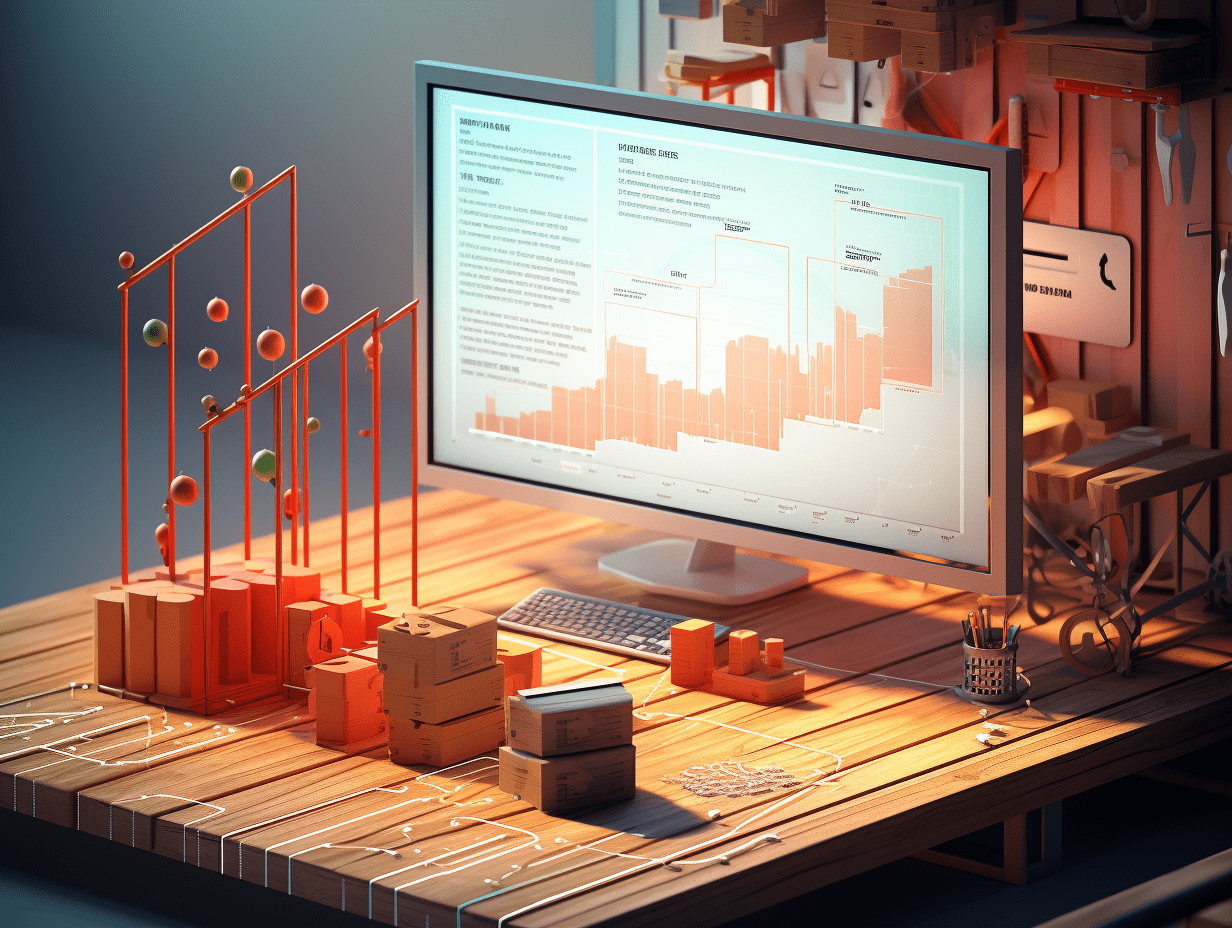General Administration of Customs and other departments: Basic deficiencies in facilities, equipment, and informatization at ordinary ports will be filled by 2025, and the passage conditions at ports will be significantly improved.
By 2025, the basic deficiencies in ordinary port facilities and informationization will be filled, and the passage conditions at ports will be significantly improved; the level of intelligence in important port facilities and regulatory operations will be significantly enhanced; hub ports will be basically built into smart ports and play a leading role in demonstration.
Recently, the General Administration of Customs and other departments issued guidance on the construction of smart ports. It mentioned that by 2025, the deficiencies in equipment and informatization at ordinary ports will be basically filled, and the passage conditions at ports will be significantly improved; the level of intelligence in equipment and regulatory operations at important ports will be significantly enhanced; and hub ports will be basically built as smart ports and play a leading and exemplary role. By 2030, a good ecology of smart interconnection, coordinated linkage, and efficient operation among all participants at ports will be established, and the level of intelligence at some ports will reach an international advanced level. By 2035, modern ports will be basically built, leading the global development of smart ports.
Upgrade and improve the "single window" platform. Use new technologies such as big data, cloud computing, blockchain, and artificial intelligence to upgrade and improve the underlying platform, enhance the integrated management and service capabilities of "development and operation integration" in the whole process of digitalization, and adapt to the rapidly changing business demands. Promote the construction of a cross-border trade big data platform, optimize data exchange and sharing mechanisms, improve data governance, and orderly promote the open and efficient utilization of data resources in accordance with laws and regulations.
The original text is as follows:
Guidance on the Construction of Smart Ports by the General Administration of Customs, the National Development and Reform Commission, the Ministry of Industry and Information Technology, the Ministry of Finance, the Ministry of Transport, the National Immigration Administration, the National Railway Administration, the Civil Aviation Administration of China, and China National Railway Group
Customs Administration Letter [2024] No. 89
People's Governments of Provinces, Autonomous Regions, and Municipalities directly under the Central Government:
In order to thoroughly implement the deployment requirements of the Party Central Committee and the State Council on smart customs, intelligent borders, and smart connectivity, coordinate port development and security, accelerate the digital transformation and intelligent upgrading of ports, promote the construction of smart ports, and serve high-level opening to the outside world and high-quality development, with the approval of the State Council, the following guidance is now proposed on the construction of smart ports:
1. Construction goals
Relying on the integrated digital foundation of the international trade "single window," using advanced facilities and equipment and new generation digital technologies, build an international first-class modern port with smart port facilities and equipment intelligence, operation management digitization, precise collaborative supervision, ubiquitous comprehensive services, and regional cooperation mechanism as its main features.
By 2025, the deficiencies in equipment and informatization at ordinary ports will be basically filled, and the passage conditions at ports will be significantly improved. The level of intelligence in important port facilities and equipment and regulatory operations will be significantly enhanced. Hub ports will be basically built as smart ports and play a leading and exemplary role. By 2030, a good ecology of smart interconnection, coordinated linkage, and efficient operation among all participants at ports will be established, and the level of intelligence at some ports will reach an international advanced level. By 2035, modern ports will be basically built, leading the global development of smart ports.
2. Intelligent construction of port facilities and equipment
(1) Intelligent port production and operation facilities and equipment. Encourage port operating entities to upgrade and renovate old facilities and equipment, promote intelligent loading and unloading, cargo handling, stacking, and changing modes of port operations. Encourage eligible ports to build automated unmanned terminals, realize real-time monitoring of the operation status of facilities and equipment, automated container transfer and stacking, intelligent planning and scheduling of transportation tool driving paths, and intelligent management of the entire port operation process. Promote the synchronized upgrading of border port infrastructure equipment with adjacent countries to jointly enhance bilateral port passage capacity.
(2) Smart inspection of port facilities and equipment. Promote the application of intelligent networking of non-contact and non-invasive law enforcement equipment, ship automatic identification system (AIS) equipment, and other intelligent facilities and equipment at ports. Upgrade and share checkpoint equipment, videos, and related intelligent facilities and equipment to improve port inspection efficiency and promote efficient utilization of port resources. Increase the application of new security technologies at national borders, encourage the research and application of portable rapid screening and testing equipment, achieve accurate, fast, and manageable inspection, and build an intelligent security defense line at national borders.
3. Digitization of port operation management
(3) Visualization of port operation management. Use digital technology to enhance the dynamic perception capabilities of port operations. Gather information on infrastructure, logistics operations, customs supervision, etc., to form an all-element data resource "one repository" for ports. Real-time monitoring of key port operation indicators, visualization of daily port operation status, analysis and disposal of port abnormal events, and realization of a panoramic view of port operation management with a "one map."
(4) Intelligent joint prevention and control at ports. Collaboratively establish a comprehensive scheduling platform for joint prevention and control at ports integrating basic data, risk features, knowledge graphs, algorithm models, and information applications. Establish and improve the mechanism for joint prevention and control at ports, jointly conduct port security risk monitoring and early warning, analysis and judgment, command and dispatch, emergency response, and other work, to achieve one-key comprehensive port prevention and control management throughout the entire process, full cycle, and closed-loop.
(5) Digitization of port performance evaluation. Around aspects such as port hardware facilities, passage capacity, input-output, operation safety, customs facilitation, intelligence and smartness, management services, and social benefits, establish a comprehensive evaluation index system and evaluation model for ports, to achieve a comprehensive performance evaluation of ports with "one ruler." Apply the evaluation results to the dynamic management of ports by classification and level, promote rational layout and efficient use of port resources. Conduct an analysis of the overall passage efficiency at ports to address bottleneck issues at ports.
4. Precise collaborative supervision at ports
(6) Intelligent customs clearance at ports. Promote the deep integration of smart ports with smart customs, smart border inspections, and smart maritime affairs, widely use intelligent methods in the field of port customs clearance, achieve minimal intervention, fast customs clearance, and precise supervision. Use intelligent sensing recognition, analysis and early warning, quarantine inspection, and other technologies to achieve trend-oriented supervision, explore and promote touchless customs clearance. Promote one-stop customs clearance verification for inbound and outbound transportation vehicles and passengers, and explore the implementation of new border inspection customs clearance models for passenger inbound and outbound inspection. Strengthen the application of "e-navigation" technology, pilot the construction of a new generation ship traffic management system, and promote the integrated development of maritime supervision and navigation security.
(7) Collaborative operation at ports. Efficiently connect port customs clearance and logistics operations, strengthen two-way information interaction, and improve the efficiency of logistics operations. Enhance information interconnection among port and aviation, venues, inspection units, etc., vigorously promote paperless operations such as direct loading and unloading and handover of equipment, and expand the "check before loading" of export LCL goods. Promote the construction of public information platforms for air logistics, carry out cross-border logistics information exchange at road ports, promote the reuse of railway waybills and customs declaration data, promote standard integration, information sharing, and business coordination.
(8) Joint supervision at ports. Integrate...Optimize port supervision resources, establish a cross-department coordination mechanism that is efficient and cooperative, and promote the joint management and governance of ports. Promote the sharing and recognition of information such as dangerous goods, wildlife, transportation registration and dynamics, advance notice of inbound and outbound personnel, inspection and testing reports. Increase the use of intelligent applications such as intelligent image reviewing and video recognition to achieve efficient sharing of information and intelligent judgment and disposal. Implement joint inspections of inbound and outbound transportation vehicles such as ships, aircraft, trains, and motor vehicles, and promote the integration of smart border vehicle clearance.V. Comprehensive Construction of Port Integrated Services
(9) Enhancing the convenience of business operations for enterprises. Strengthening the integration of the "single window" standard version with local characteristic applications, deepening the construction of "customs clearance + logistics" and "trade + finance", covering the entire chain of cross-border trade business. Providing services such as intelligent customs tariff information query, intelligent generation of documents, intelligent assistance in classification, intelligent verification and matching, and intelligent compliance checks. Establishing a cross-border trade knowledge base to provide enterprises with accurate policy measures, guidance on business processes, intelligent retrieval of questions and answers, and other services. Building an online enterprise workspace to support direct connection of enterprise systems, improve system interoperability, meet the diverse and personalized needs of enterprises. Promoting the extension of routine business operations for enterprises to mobile platforms, enabling more services to be handled on mobile devices anytime, anywhere.
(10) Building a diversified logistics service network. Strengthening the connection and coordination between different forms of logistics organizations, and building a diversified logistics service network with smooth connections and external links. Promoting multimodal transport "one-document system" and "one-box system", enabling consignors to entrust once, settle fees once, and insure goods once, with the entire transport process being "no change of containers, no opening of containers, and one container to the end", and the multimodal transport operator taking full responsibility. Strengthening cooperation among industries such as production, trade, warehousing, and logistics, promoting the integration of smart warehouses, smart logistics, smart factories, and smart ports, and realizing the transformation from traditional models to digitalization. Strengthening the smart and coordinated linkage between ports and industrial hinterlands, harbor areas, and industrial parks, expanding pilot projects such as "remote cargo stations", "combined ports", "linked offloading", and "departure confirmation", and enhancing the accessibility of goods transport.
(11) Promoting digitalization of cross-border trade. Integrating digital trade, digital logistics, digital finance, and other resources to improve the infrastructure of cross-border digital trade. Supporting the development of new forms of foreign trade such as cross-border e-commerce and overseas warehouses. Exploring intelligent matching, intelligent contracts, DIGIHUMAN cross-border payment in RMB, facilitating online cross-border transactions. Accelerating the digitalization of maritime trade, facilitating international logistics "door-to-door" services. Pilot projects to establish online cross-border legal services platforms, providing services such as foreign legal verification, consultation, compliance, and case handling.
(12) Serving the development of port economies. Based on resource endowments, locational advantages, and industrial foundations, promoting the development of port economies with features such as "smart ports+" for processing, professional markets, trade logistics, cross-border trade, and border tourism. Promoting the digitization of service trade, building a service platform for cross-border economic cooperation zones, better connecting "two markets and two resources". Supporting the development of national processing trade industrial parks, industrial parks near the border, and international land-sea ports, promoting the sharing of information resources and industrial chain connection across regions, and facilitating the orderly transfer of industries to central and western regions.
VI. Promoting the Institutionalization of Port Regional Cooperation Mechanisms
(13) Serving the coordinated development of domestic regions. Supporting the construction of the "Bay Area Global Top E-Commerce", promoting the "one declaration and two reports" of goods between the mainland and Hong Kong, and the mainland and Macao. Building a smart supervision platform for Hainan Free Trade Port. Exploring smart intermodal logistics models at ports along the Yangtze River Economic Belt, optimizing the connection of "water-water transfer" logistics transportation, and promoting the integrated development of ports in the Yangtze River Delta. Strengthening the cooperation between inland ports and coastal and border ports, and building a digital western land-sea new passage.
(14) Promoting international connectivity and cooperation. Promoting exchanges and cooperation in the port sector with countries along the "Belt and Road" Initiative and important trading partners, and establishing online service zones for trade cooperation with ASEAN, the Shanghai Cooperation Organization, the Asia-Pacific Economic Cooperation, BRICS countries, and others. Strengthening cooperation with major global ports, exploring and promoting digitalized interchange and recognition of electronic bills of lading, paperless release of goods, and full-process visibility and traceability of cross-border logistics. Promoting the exchange of electronic certificates in the fields of international shipping, inspection and quarantine, preferential origin, etc. Exploring the establishment of a platform for calculating the rules of origin accumulation under the Regional Comprehensive Economic Partnership (RCEP). Promoting the exchange of information for "Authorized Economic Operators" (AEO).
VII. Construction of the Digital Foundation of Smart Ports
(15) Upgrading the "single window" platform. Utilizing new technologies such as big data, cloud computing, blockchain, artificial intelligence, etc., to upgrade and improve the underlying platform, enhancing the integrated development and operation of "development and maintenance", digitizing the entire process of management and service, and adapting to rapidly changing business needs. Promoting the construction of a big data platform for cross-border trade, optimizing data exchange mechanisms, improving data governance, and orderly opening and utilization of data resources in accordance with laws and regulations.
(16) Strengthening safety operations and customer service. Implementing national network and data security management requirements, promoting the application of privacy computing technology in a trusted environment, improving joint operation and maintenance guarantee mechanisms, enhancing the ability to respond to and deal with faults quickly, and ensuring the safe, stable, and efficient operation of the system. Establishing an intelligent customer service center, standardizing service processes, providing users with round-the-clock rapid responses and accurate services.
(17) Establishing a sound standard system for smart ports. Using standardization to guide the construction of smart ports, constructing a standard system for smart ports that includes general basic standards, facilities and equipment standards, data exchange and technical support, management and service standards, evaluation standards, and safety standards. Promoting the implementation of standards applications, supporting relevant industry departments and social organizations to participate in the formulation of standards.
The General Administration of Customs (National Port Management Office) should strengthen overall coordination and tracking supervision, scientifically evaluate the progress of smart port construction, promptly promote experience and best practices, and fully mobilize the enthusiasm of all parties. Other relevant departments of the State Council should actively participate according to their division of responsibilities, form a joint effort to create a good policy environment for smart port construction. The people's governments of provinces (autonomous regions, municipalities directly under the central government) and the locations of ports should effectively fulfill their main responsibilities, incorporate smart port construction into local development plans, clarify responsibilities, refine objectives and tasks, and implement them. Related localities and departments should ensure funding guarantees in accordance with the division of financial powers and expenditure responsibilities between the central and local governments, promote the sustainable and stable development of smart port construction.
General Administration of Customs, National Development and Reform Commission, Ministry of Industry and Information Technology, Ministry of Finance, Ministry of Transport, State Immigration Administration, National Railway Administration, Civil Aviation Administration of China, China Railway Corporation
September 10, 2024
This article was selected from the "Customs Release" WeChat public account and edited by GMTEight: Li Fo.
Related Articles

In 2026 before stepping down, Powell left Wall Street with one sentence: "The US stock prices are already very expensive."

"Silver Rhapsody" enters a high volatility chapter? Silver quickly plunges after hitting a historical high of $84, dropping more than 3%.

Needle point against wheat ear: The internal division of the Federal Reserve in 2025, 2026 may be even more exciting
In 2026 before stepping down, Powell left Wall Street with one sentence: "The US stock prices are already very expensive."

"Silver Rhapsody" enters a high volatility chapter? Silver quickly plunges after hitting a historical high of $84, dropping more than 3%.

Needle point against wheat ear: The internal division of the Federal Reserve in 2025, 2026 may be even more exciting

RECOMMEND

Not Just “Power Shortages,” Delays Will Become The Key Theme For U.S. Data Centers In 2026
26/12/2025

Hang Seng Index Rises 33% This Year, Best Five‑Year Performance; Multiple Institutions Forecast Breakthrough Above 30,000 Next Year
26/12/2025

Gold Rally Has Further To Run, JPMorgan Bullish: Prices Could Reach USD 5,055 By Year‑End 2026
26/12/2025


